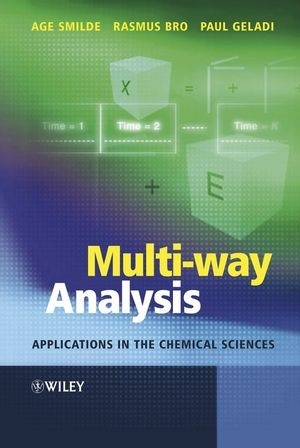En savoir plus
Klappentext This book presents a detailed description of three-way and multi-way arrays! their properties and the methods utilised to model these arrays mathematically. Multi-way component analysis is introduced by its two most important models - Tucker3 and PARAFAC. In addition! intermediate and derived models are included. Multi-way regression methods receive special attention and a number of algorithms are presented. The book includes detailed accounts of diagnostics! visualization of results and handling of residuals. Appropriate attention is given to the preprocessing of data. Mathematical rigor is applied where necessary and numerous proofs are included. The book concludes with an overview of the different application fields of multi-way analysis! including analytical chemistry! process monitoring! environmental analysis and three-way data resulting from ANOVA or designed experiments. The relationship of these methods to chemistry is always emphasized.The book is aimed at researchers who are interested in theoretical and practical aspects of data analysis. It is directly relevant to chemical sciences such as analytical! environmental! clinical and physical chemistry. In addition! it is pertinent to chemometrics! bioinformatics! biochemistry! process analysis! food chemistry and sensory analysis. Zusammenfassung Die Mehrwegeanalyse ist eine moderne Methode der Datenanalyse, die sich in chemischen und industriellen Labors zunehmender Beliebtheit erfreut. Während etliche Werke auf dem Markt sind, die sich mit den mathematischen Grundlagen des Verfahrens beschäftigen, fehlte bisher eine speziell für den Chemiker geeignete praxisbezogene Einführung. "Multi-Way Analysis in Chemistry" schließt diese Lücke und bietet eine ideale Mischung aus theoretischen Hintergrundinformationen und chemischen Anwendungen. Inhaltsverzeichnis Foreword.Preface.Nomenclature and Conventions.1 Introduction.1.1 What is multi-way analysis?1.2 Conceptual aspects of multi-way data analysis.1.3 Hierarchy of multivariate data structures in chemistry.1.4 Principal component analysis and PARAFAC.1.5 Summary.2 Array definitions and properties.2.1 Introduction.2.2 Rows! columns and tubes; frontal! lateral and horizontal slices.2.3 Elementary operations.2.4 Linearity concepts.2.5 Rank of two-way arrays.2.6 Rank of three-way arrays.2.7 Algebra of multi-way analysis.2.8 Summary.Appendix 2.A.3 Two-way component and regression models.3.1 Models for two-way one-block data analysis: component models.3.2 Models for two-way two-block data analysis: regression models.3.3 Summary.Appendix 3.A: some PCA results.Appendix 3.B: PLS algorithms.4 Three-way component and regression models.4.1 Historical introduction to multi-way models.4.2 Models for three-way one-block data: three-way component models.4.3 Models for three-way two-block data: three-way regression models.4.4 Summary.Appendix 4.A: alternative notation for the PARAFAC model.Appendix 4.B: alternative notations for the Tucker3 model.5 Some properties of three-way component models.5.1 Relationships between three-way component models.5.2 Rotational freedom and uniqueness in three-way component models.5.3 Properties of Tucker3 models.5.4 Degeneracy problem in PARAFAC models.5.5 Summary.6 Algorithms.6.1 Introduction.6.2 Optimization techniques.6.3 PARAFAC algorithms.6.4 Tucker3 algorithms.6.5 Tucker2 and Tucker1 algorithms.6.6 Multi-linear partial least squares regression.6.7 Multi-way covariates regression models.6.8 Core rotation in Tucker3 models.6.9 Handling missing data.6.10 Imposing non-negativity.6.11 Summary.Appendix 6.A: closed-form solution for the PARAFAC model.Appendix 6.B: proof that the weights in trilinear PLS1 can be obtained from a singular value decomposition.7 Validation and diagnostics.7.1 What is validation?7.2 Test-set and cross-validation.7.3 Selec...

